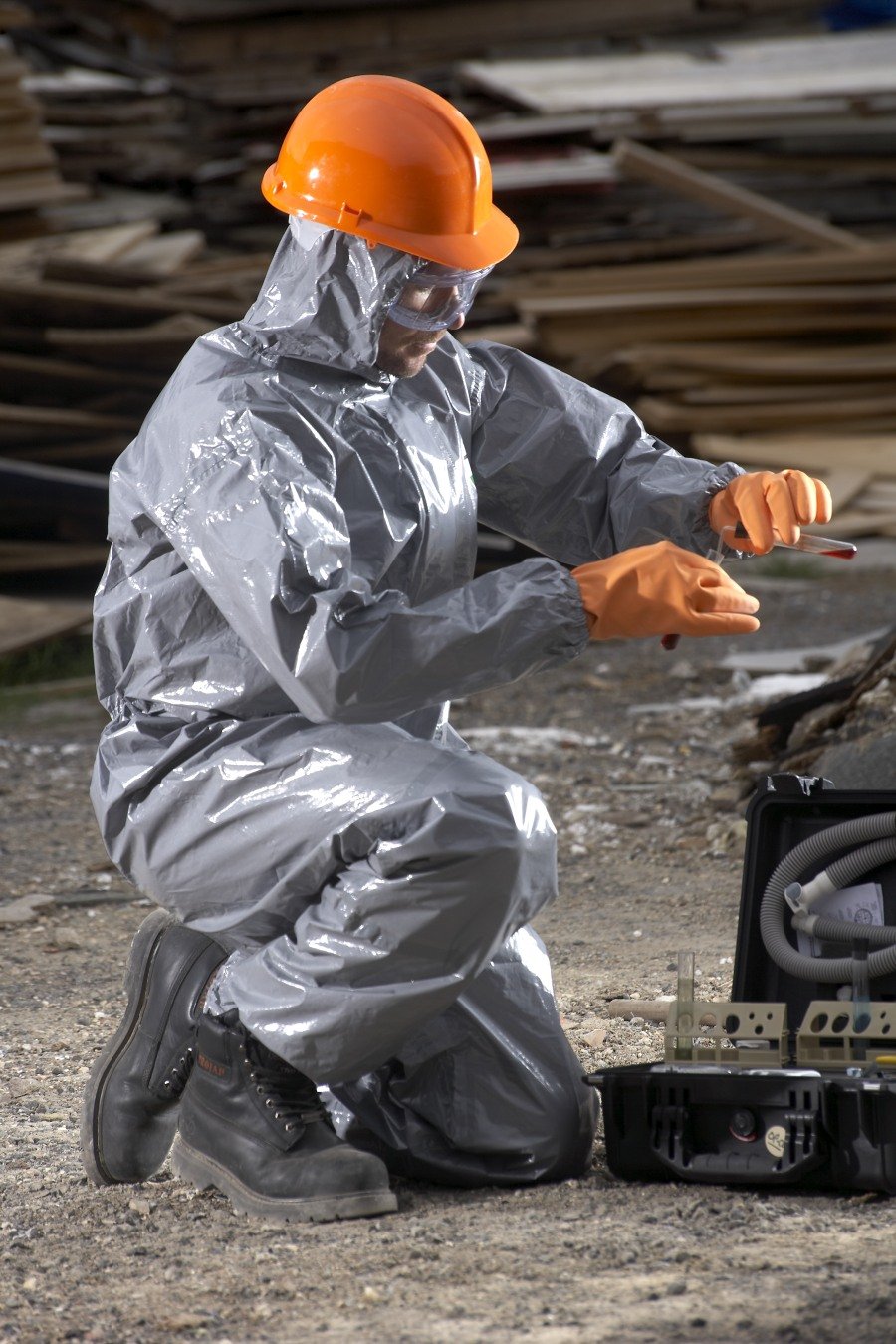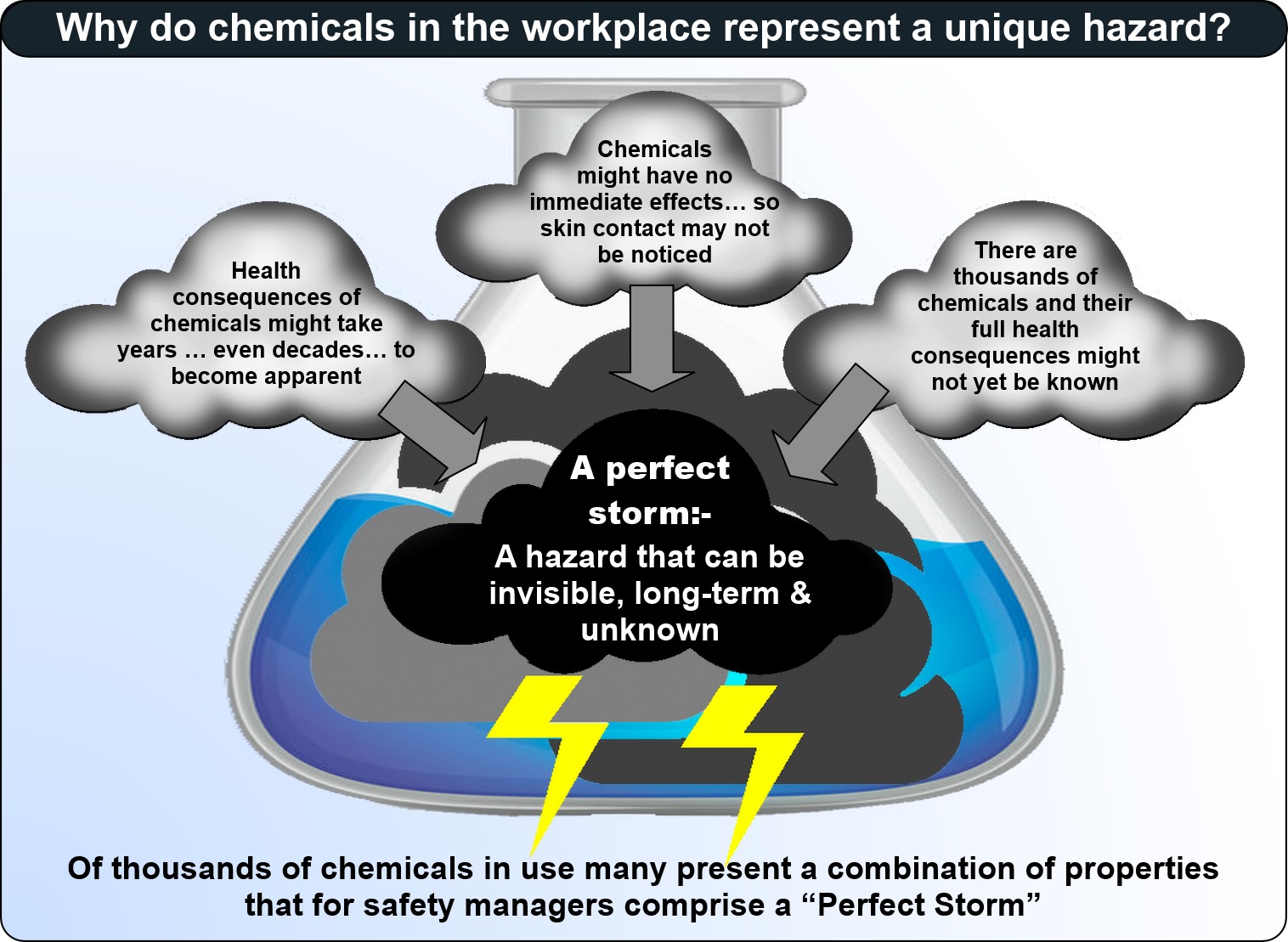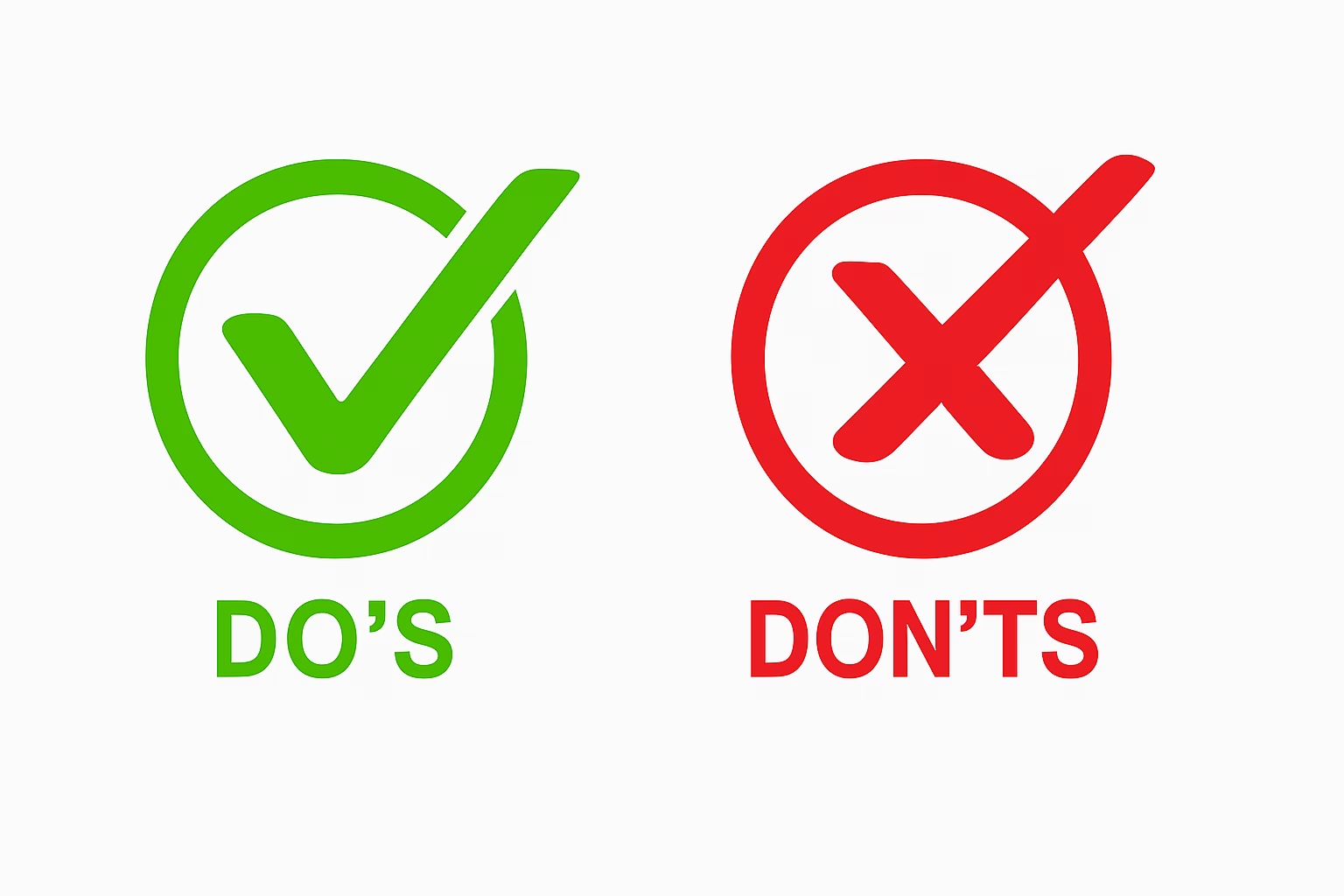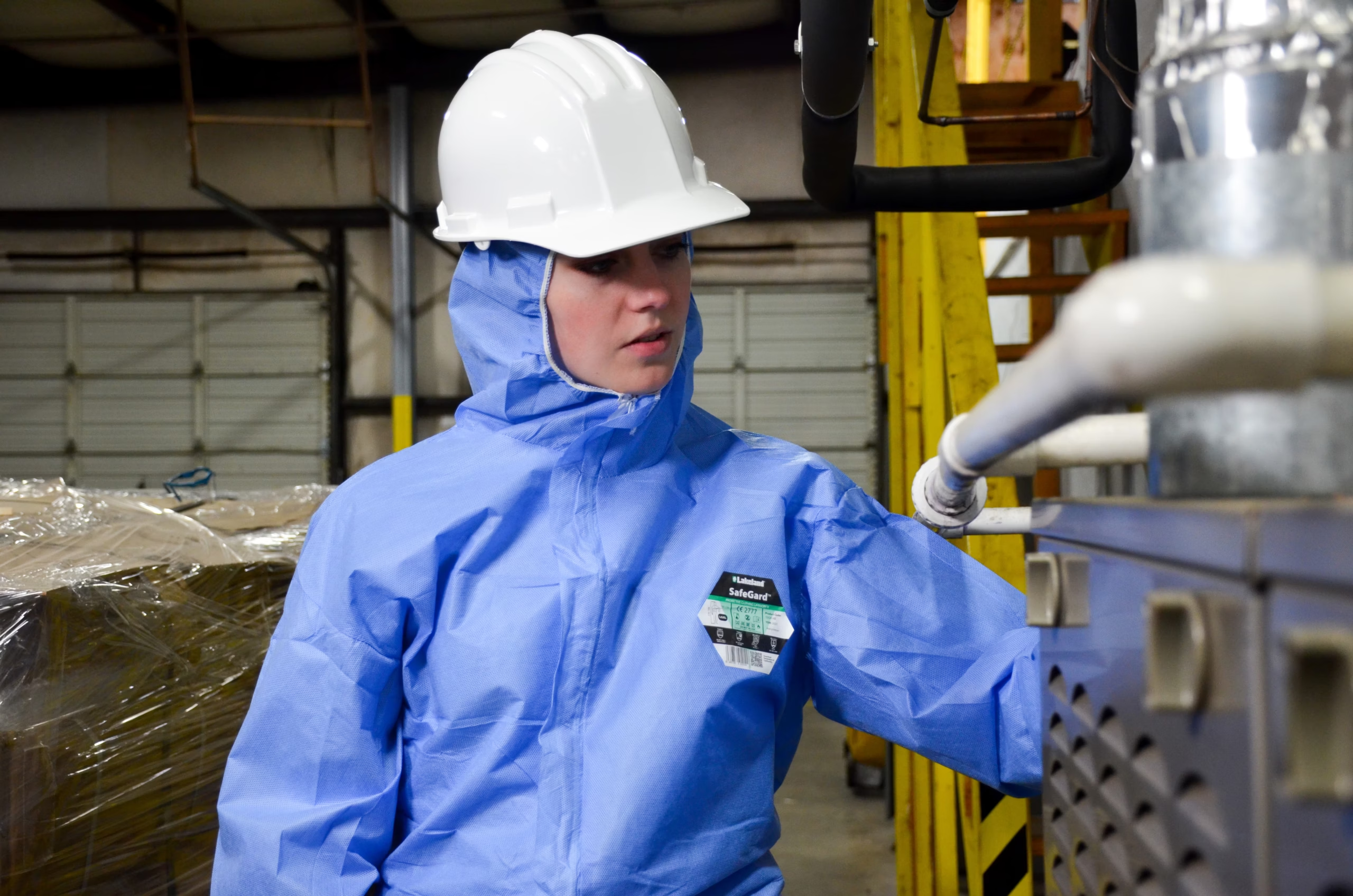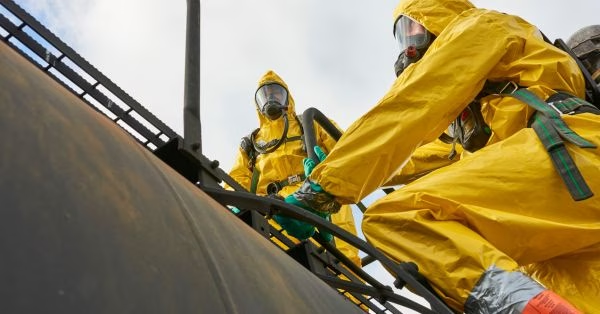Why does chemical safety represent a unique hazard in the workplace?
Safety managers all over the world are charged with ensuring workers are using the correct safety clothing to protect against chemicals.
But how many chemicals are in use today?
In scientific terms, a chemical is any substance consisting of matter. Everything we can see, touch and feel is a chemical. Yet in the context of health and safety by the term “chemicals” we are usually referring to those liquids and sometimes dusts that we use at home for cleaning and other purposes, and in the workplace for a variety of applications. The oil, gas and petrochemical industry is a classic case, using many chemicals, whether feed stocks and raw materials, catalysts used in different processes, finished products or those used in maintenance.
Global Challenge of Chemical Safety
Estimates for the number of chemicals in use throughout the world vary widely – with 84,000 or more being commonly quoted. This is however probably an over-estimate. In 2016 the US Environmental Protection Agency listed 38,304 chemicals of which 8,707 were actually in use.[1] So it is certainly numbered in thousands.
On individual chemical plants the number can vary depending on what the plant does – from a handful to several hundred. I have certainly visited chemical plants where any of four or five hundred chemicals could be present at any one time.
Whatever the exact numbers are, chemicals are a fact of our industrial lives, and many present hazards for workers. Yet hazards that are unique and somewhat different from most workplace hazards. So what makes chemicals so special?
Most hazards in the workplace are obvious. A danger on a building site is that of falling bricks. Most of us can easily anticipate without too much training what will happen if one falls on our head. So guarding against that hazard by wearing suitable PPE (a hard hat), just in case is clearly sensible.
Most workplace hazards are of this nature; falling from height, tripping over an errant cable or being engulfed by flame from a burst pressurized valve. The consequences are immediate and relatively obvious.
Acids are the classic case – if an acid splashes onto your skin the resulting burns will be obvious and immediate. However, the hazards presented by many chemicals are different and far more insidious. In these cases you might not even notice if it contacts your skin… and yet the consequences of that contact, whilst not immediate, may well be devastating.
Explore the key factors influencing chemical safety suit selection now.
Example: The Health Effects of Benzene
Take, for example benzene (CAS No 71-43-2). A very common chemical – an aromatic hydrocarbon – derived from oil and used in processes to make several other commonly used chemicals as well as an additive in petrol (though as a consequence of concerns about its health effects this is less common than it used to be and levels are strictly controlled). Most of us however, will regularly come into contact with very low levels of benzene.
Benzene is not selective about how it enters the body. It can be inhaled, ingested or will readily absorb through the skin. It is a carcinogen and exposure can increase the likelihood of developing cancers and other diseases.
These diseases include aplastic anemia, acute leukemia, bone marrow abnormalities, cardiovascular disease, acute myeloid leukemia (AML), myelodysplastic syndrome (MDS), acute lymphoblastic leukemia (ALL), and chronic myeloid leukemia.[2]
Surprisingly perhaps, knowledge about the adverse health effects of benzene is not new. In fact in 1928, almost one hundred years ago, the first case of leukemia associated with benzene exposure was reported[4].
Despite all this – and other examples of the early recognition of the dangers of benzene the first regulations to control the use of benzene were finally introduced by OSHA in 1978… some fifty years after the first related case was reported.[5]
Benzene is a perfect example of a very common chemical (it does actually occur naturally in some situations) that has limited immediate effects and can potentially become devastating long term consequences which could certainly involve life-changing illnesses and possibly death. A chemical can be a silent, devious and insidious killer, making them even more difficult to protect against than most workplace hazards.
How much is really known about chemical hazards in the workplace?
Yet there is another reason why chemicals represent such an acute problem for safety managers keen to ensure proper chemical safety for workers. A reason highlighted by a quick perusal of the chemical safety data sheets of a random selection of chemicals.
In the hazards section of these useful documents (a good source is the European Chemicals Agency ECHA) you will often find statements such as “suspected of causing cancer” or “may cause damage to the unborn child” (my italics). The fact is knowledge of the health effects of many chemicals is limited and uncertain.
|
Overall, many chemicals represent a unique hazard in the workplace; a specific combination of properties that from the point of view of safety and protection is almost a perfect storm.
Chemicals are a hazard that can be invisible at the time, may only take effect years later and that may not yet even be known. It is easy to guard against the possibility that a brick might fall on someone’s head. It much more of a challenge to guard against the health effects of contact with chemicals that not only might not be noticed, but the consequences of which may not take effect for years or even decades, and which you might not even be aware of!
The Biggest Misunderstanding in Health and Safety at Work?
This is why the current and almost ubiquitous misunderstanding of the chemical breakthrough time in a permeation test against safety clothing fabric is such a potential problem. The fact is, most safety managers, when selecting chemical protective clothing primarily use a breakthrough time from a permeation test as an indication that the suit is safe to use. Unfortunately in most cases this test is misunderstood with the result that users may think they are protected from the chemical when in fact they are not.
You can find out more about this common misunderstanding of permeation test results in our blog “Permeation Test breakthrough is not what you think it is”
Or you can discover more about how to select the most appropriate chemical suit for your application by downloading a free copy of “The Guide to Chemical Suit Selection” from the link below.
{{cta(‘6171d748-349e-48ac-ac43-db2d5ad4f3b0′,’justifycenter’)}}
Sources
[1] https://www.chemicalsafetyfacts.org/health-and-safety/understanding-risk-and-hazard-when-it-comes-to-chemicals/
[2] https://en.wikipedia.org/wiki/Benzene
[3] “Journal of Pediatric Hematology and Oncology”:https://www.tandfonline.com/doi/abs/10.3109/08880018.2013.831511
[4] https://www.cbi.lm.ih.gov/pmc/articles/PMC3363002/
[5] https://ehp.niehs.nih.gov/doi/abs/10.1289/ehp.8982299




